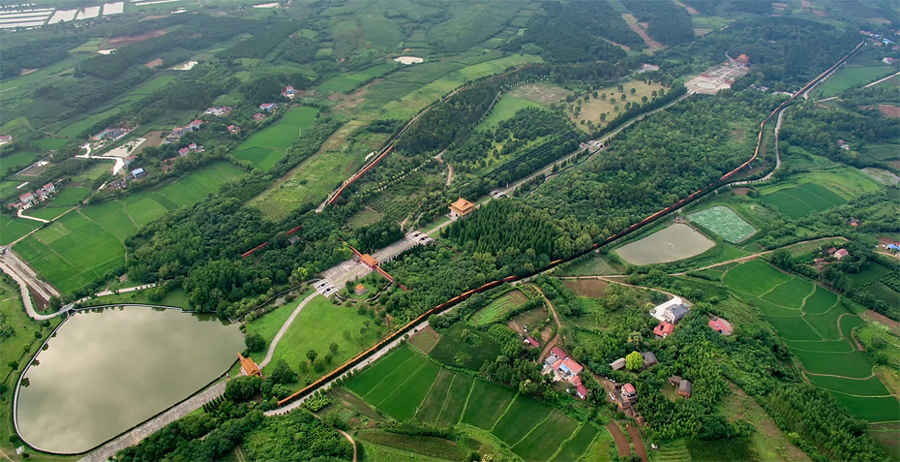Xianling Mausoleum of the Ming Dynasty
Xianling Mausoleum is the joint Tomb of Ruizongxian Emperor and his wife Jiangshi, parents of Emperor Jiajing Zhu Houcong. It is located on Chunde mountain,near the Bank of Mochou Lake in the northeast of Zhongxiang City, Hubei Province. It was built from 1519 to 1541, which lasted 22 years, and the main project was completed. Covering an area of 2747 mu (about 183.15 hectares), the whole cemetery has surrounded by two cities with red walls and yellow tiles. The total length of wailuo city is 3600 meters, winding up and down among the mountains. The mausoleum is composed of more than 30 large-scale buildings, which are arranged gradually. The mausoleum is a masterpiece of combining architectural art and environmental aesthetics. It is the highest form of expression and architectural model of ancient Chinese funeral art.
Since the founding of the People's Republic of China, it has been attached great importance by governments at all levels and has been greatly protected and developed. In 1956, it was announced as the first batch of provincial key cultural relics protection units by Hubei Provincial People's government, and in January 1988, it was announced as the third batch of national key cultural relics protection units by the State Council. In 2000, it was listed in the world cultural heritage list. The cultural relics protection and cultural tourism of the mausoleum have achieved fruitful results. At the same time, it also reflects the hard work and unremitting efforts of several generations, It has been praised as "the advanced collective of national cultural relic system" by the Ministry of Personnel and the Bureau of cultural relics twice. The tour guide reception has been awarded "National Youth Civilization" by the Central Committee of the Communist Youth League, and has been awarded "civilized unit" by the Hubei Provincial Government for 16 consecutive years.
As an independent imperial mausoleum,Xianling Mausoleum has universal and special historical value and significance. According to the evaluation of the World Heritage Committee, the mausoleum is selected carefully in terms of the geomantic theory, and a large number of buildings are cleverly placed underground. It is the product of human changing nature, reflects the traditional architectural and decorative ideas, and explains the world outlook and power outlook of China in the Imperial Society for hundreds of years.
Click here to see more


